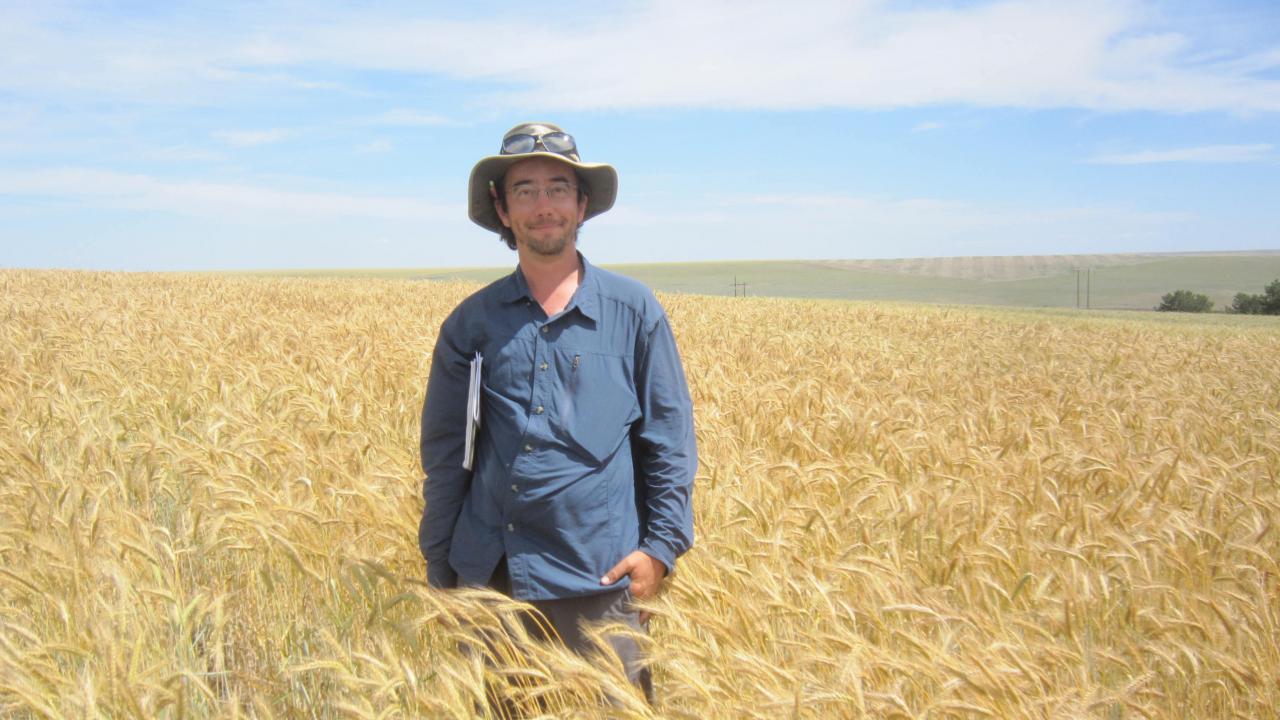
Postdoctoral researcher Josh Hegarty leads NIFA-funded project to breed triticale cultivars for forage
Josh Hegarty, a postdoctoral researcher in the Dubcovsky Lab in the Department of Plant Sciences at the University of California, Davis, is leading a project to develop commercial varieties of triticale to be grown for forage and feed. The National Institute of Food and Agriculture, or NIFA, is granting a $300,000 investment as part of their Agriculture and Food Research Initiative.
The project aims to deliver at least two new cultivars of triticale, with one optimized for spring in the Central Valley of California and another to be winter hardy for Northern California and the Pacific Northwest. A possible third cultivar may be developed alongside the winter variety.
These new cultivars will provide valuable options for growers in these regions, which are already producing considerable amounts of triticale for forage.
Triticale – a man-made hybrid between wheat and rye first bred near the end of the 19th century – has received little development as a forage crop despite boasting impressive yields and great disease and stress tolerance. As a frame of reference, triticale can produce 15 to 20 percent more forage per acre on average than other small grains, like wheat.
Importantly, triticale does well in low-water scenarios like drought years. In addition to the plant’s high stress tolerance, this is due to its long root system, which allows it to pull water from deep in the soil, Hegarty explained.
With water access and drought years increasingly becoming an important limitation for growers, particularly in California, triticale offers promise as an alternative to wheat and other small grain crops that will meet the challenges of our near future without sacrificing yield.
“Triticale poses so much potential,” Hegarty said. “But there hasn’t been enough concerted effort to get it over that last hump.”
Hegarty, who has started to specialize in triticale over the past few years as postdoctoral researcher in the Dubcovsky Lab, will leverage the knowledge he has gained through his previous research projects. He will also rely on his extensive collection of triticale germplasm in the development of these new cultivars.
Jorge Dubcovsky, distinguished professor in the Department of Plant Sciences, and Arron Carter, professor and wheat breeder at Washington State University will assist as investigators on the project.
As part of the grant, Hegarty will continue a collaborative triticale breeding initiative with colleagues at Washington State University and Colorado State University wheat breeding programs, with UC Davis as the center for the initiative.
“UC Davis is uniquely positioned to be a hub for triticale breeding, as we can grow our breeding material in very different environments through the UC-ANR research and extension stations and it helps that many growers in our area have adopted triticale for forage production” Hegarty said. “By bringing together public and private sector collaborators from around the world and utilizing the resources available here at Davis, I believe we can deliver on the sizable potential that triticale offers.”
To see the full list of funded research within each program area, click here.
